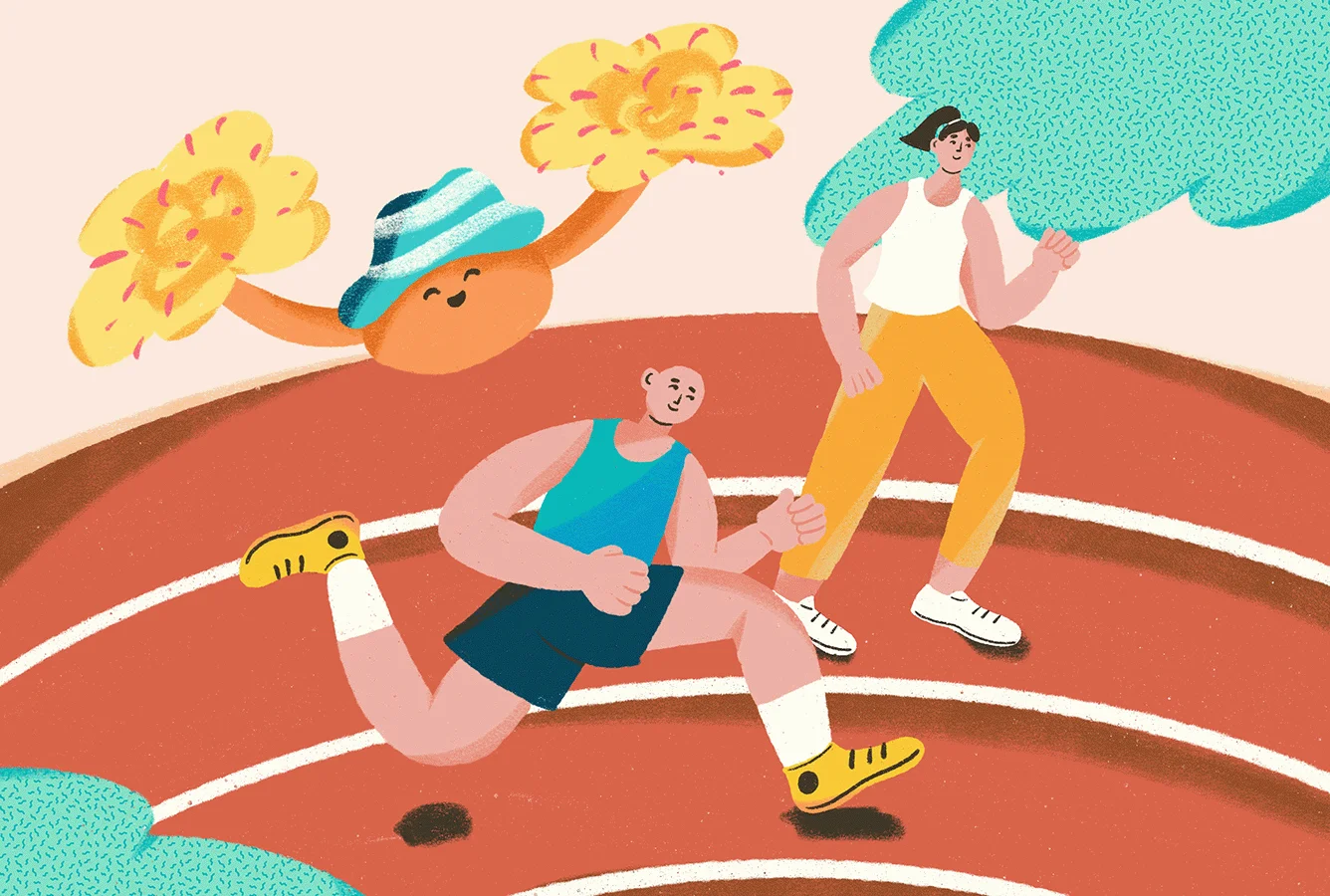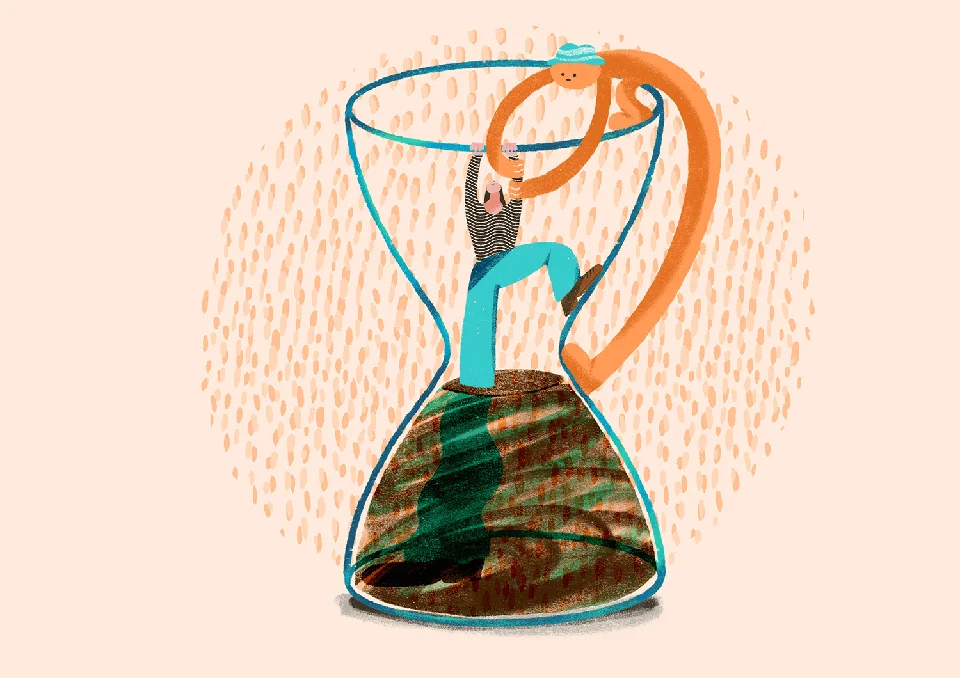Achieving work-life balance as a teacher
Is "do what you love" a myth or a truth?

Ruby Liu MY
Register for free
One-stop online mental health self-help platform.

In our previous articles about teacher burnout, we have delved into the main stressors of Hong Kong teachers and suggested ways to reduce stress. In this article, we will explore how a positive and collaborative school culture can encourage teachers’ work engagement through a real-life example.

Graduated with a bachelor’s degree in Physical Education and Recreation Management, Ying-Chi Yu is a sportsperson who devotes herself to sports all the time. She is representing Hong Kong’s women's national volleyball team, as well as working as a primary school PE teacher. As the interview began, our first question was ‘‘Is being a teacher your dream career?’’ Chi giggled and shared, ‘‘Not at all! Initially I just went with the flow as many of my classmates pursued a career in teaching.’’ Started the career without much expectation, Chi realized that she enjoys imparting knowledge to students, after spending six years being a teacher. ‘‘I like to interact with people, child and adult alike. Many students consider me as a companion who can have fun together, but also a strict teacher who is serious in class.”
Over the past six years of teaching, Chi has worked in two subsidized schools, a primary school and a secondary school respectively, before working in the current direct subsidized primary school. Working in a subsidized school is a common goal for many university graduates who hold a postgraduate diploma in education. One of the strongest reasons is that teachers who are employed in subsidized schools can be offered permanent contracts, while teachers in direct subsidized schools need to have their contract renewed every year, undermining their job security and financial stability.
‘‘No matter how experienced and qualified you are, you still need to have lesson observations and appraisals by the principal every year if you work in a direct subsidized school. Those observations and appraisals could be very distressing.’’ said Chi.
Besides, the Mandatory Provident Fund (MPF) and Provident Fund that teachers of subsidized schools and direct subsidized schools receive at retirement can have a huge difference- Provident Fund can double the amount of MPF, reaching a difference of a million dollars. Under the Provident Fund scheme of subsidized schools, if teacher’s continuous contributory service reaches 10 years, the government's contribution would increase from 5% to 10%, and 15% for 15 years of service. In contrast, the employer’s contribution for direct subsidized schools remains at 5%.
You may wonder why Chi chose to work in a direct subsidized school when she can work in a subsidized school, which is much more secure and profitable in the long term? Chi shed light on this conundrum, ‘‘It’s all about empowering myself to regain work-life balance. I had too many ‘part-time jobs’- coach of a university volleyball team, Hong Kong athlete with regular training sessions and competitions. I wanted balance. I was a multi-tasker who needed to teach various subjects. But now, I can concentrate on teaching PE, something that I am truly enthusiastic about, which is the most tempting reason to make this decision. Besides, extracurricular activities in primary school are fewer than secondary school. I can leave more time for myself.’’
Indeed, Chi can enjoy work-life balance in a direct subsidized school, but ironically the long-term income from the Provident Fund reduced markedly - is it a trade-off for you? ‘‘Absolutely not. It’s my choice. I wish to develop my sports career and spend time on training and competitions. In order not to reduce my future income, I can earn them back through investments to ensure my financial security.’’ Follow your aspiration or follow the money? ‘‘why not both?’’, Chi answered.

Teachers under the pump and probe –
the external school review system
Leaving the comfort zone and starting a new journey in a direct subsidized school, Chi feels stressed from time to time, especially after the school accountability framework was implemented in 2016. Schools are constantly being evaluated by the External School Review (ESR) team through document review, classroom observations, and students’ academic performance, etc.
The Education Bureau reinforced the core value of school accountability with the education reform, emphasizing that school self-evaluation is complemented by External School Review (ESR) to promote schools’ continuous development and serve as the linchpin in the accountability framework.
Prior to the ESR, neither the school nor teachers know whose classes will be observed. Teachers only know after the drawing of lots that morning around 6-7 am, deciding whose classes will be observed. ‘‘We understand the importance of surprise inspections, but it is really distressing. It’s more like a flustering random draw to teachers. The preparation is also immensely time-consuming due to numerous meetings to attend and documents to review. After lesson observation, an evaluation session will be conducted to share major feedback with the teacher.’’
Upon receiving the ESR report, the school would release the findings to the stakeholders; nevertheless, it does not have much impact on teachers specifically as their names are not mentioned in the report.
Emotional outlets for teachers
Chi shared that sharing and chit-chatting with colleagues is an important emotional outlet for teachers. ‘‘In direct subsidized schools, the age difference between teachers is generally small, so we have a lot in common and much more to share. I have close friends at work who support me, share things, and face all challenges together. There are three other PE teachers who are also my buddies and we can work together with ease.’’
Mentioning her recent stress at work, Chi shared that ‘‘It’s the school's 20th anniversary celebration. Every teacher needs to oversee a themed activity. Fortunately, the school has already notified us last September so we have plenty of time to prepare.’’ Besides enabling teachers a more flexible arrangement through effective and transparent communication on the timeline, having a senior leadership team consisting of experienced teachers to offer help to junior teachers, and reflecting their opinions directly to the team or even the vice principal can relieve stress, too.
‘‘The division of labor is clear, every teacher was assigned to join an administrative team, such as ‘Learning and Teaching’, ‘Student Guidance and Discipline’, ‘Extracurricular Activities’.’’ A school culture with high levels of connectedness and transparency, allowing direct communication between principals and teachers, providing clear guidance on the division of work and teaching directions, can greatly enhance teachers’ motivation and engagement.’’

Self-directed learning: a limitless and longstanding tool
The rapid transformation in education during the pandemic has made school leadership even more critical than before. The Education Bureau announced earlier about barring unvaccinated students from non-academic activities, including music and physical education. Chi said that ‘‘In my school, all students need to wear masks during PE lessons, so this unhandy situation doesn’t apply in my school.’’ Her school also leverages digital resources as tools of self-directed learning. For example, the principal and teachers take the lead in sharing articles ranging from international news on the Russo-Ukrainian War, to delighting folk songs and practical self-care tips such as gratitude exercises, nonviolent communication skills for families, etc., campus and alumni news on the school website and Facebook. At the same time, the school encourages parents to co-create with students, such as sharing photos and experiences embodying ''Faith'', one of the Chinese five constant virtues, so as to cultivate students’ self-care habit of insisting on their faith and having mutual trust.
In a volatile environment, the school management team encourages teachers to share the concept of self-care with students. For example, Chi has written an article ‘‘Ways to incorporate physical activity into your daily routine’’, sharing methods for parents and students to stay active with just some small changes in their daily lives, like taking stairs rather than elevators, handwashing clothes to strengthen biceps and triceps. The digital self-directed learning reduces the impact of class suspension to the students and strengthens the bonding between teachers, students, and parents.
Sportathon: strengthening mind, body, soul
Chi’s school recently held a 20-day Sportathon. Students enjoyed the stories and mottos shared by Hong Kong elite athletes and sport demonstrations by teachers. The principal also joined a badminton contest with alumni and teachers to encourage students to maintain healthy habits and to cultivate values such as dedication, perseverance, and resilience.
As a school PE teacher, Chi wishes to ‘‘inculcate values including persistence, bravery, and curiosity to students. Keep on trying. I hope my students can develop these qualities and know how to truly communicate with others.’’
It’s around 10 pm when we finished the phone interview, and Chi was still having volleyball training. She can finally rest after the training before returning to school early morning. Behind the tight schedule, Chi is still on her exploratory journey, with her passion for life and honesty to her inner voice, glowing with the flow.

Ruby Liu MY
Well-being Promotion Officer of Jockey Club TourHeart+ Project



